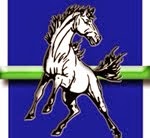Every now and then I run across some really cool Web 2.0 tools that not only are interesting, but save time and sometimes money. That is the case with a free Web 2.0 scientific calculator that I have embedded below.
Web 2.0 scientific calculator
As you can see, a teacher can either embed the calculator widget into a class blog, or a link can be created to access the web based calculator for students to bookmark to use where ever they may be.
Check it out! Web 2.0 Scientific Calculator
Another interesting widget is from Wolfram Alpha.
If you know the name of the element, and really know how to spell it, you can enter it into this Wolfram Alpha widget and find out molecular weight, substance, boiling point and solubility. Below is the information for quartz.
molecular weight | 60.0843 g\/mol\nphase | solid (at STP)\nmelting point | 1427 °C\nboiling point | 2230 °C\ndensity | 2.634 g\/cm^3\nsolubility | insoluble in water
This next widget from Answers.com is really neat. When you embed it into your blog, users can double click on any word and see the spelling, definition and hear how it is pronounced.
What you do is install this into your blog and users can double click on any word and get the definition and spelling of the word. Plus more...try it by double clicking on any word in this post. When you click on 'more' you will be taken to the Answer.com website and there is more information related to that word.
Wouldn't it be neat to have vocabulary lists on your blog that students could double click on and see the definition, learn if it is a noun or verb, and sometimes hear how the word is pronounced?
8th Grade Vocab List Sample (double click on the words)
accord
barter
benign
clad
clarify
commemorate
feasible
heritage
legendary
stance
staple
transition
Tall tale spelling and vocabulary words
-
deed- act or action
exaggerate- to stretch the truth
frontier- a remote area where few people live
settler/pioneer- the first to settle in an area
hero- main...












